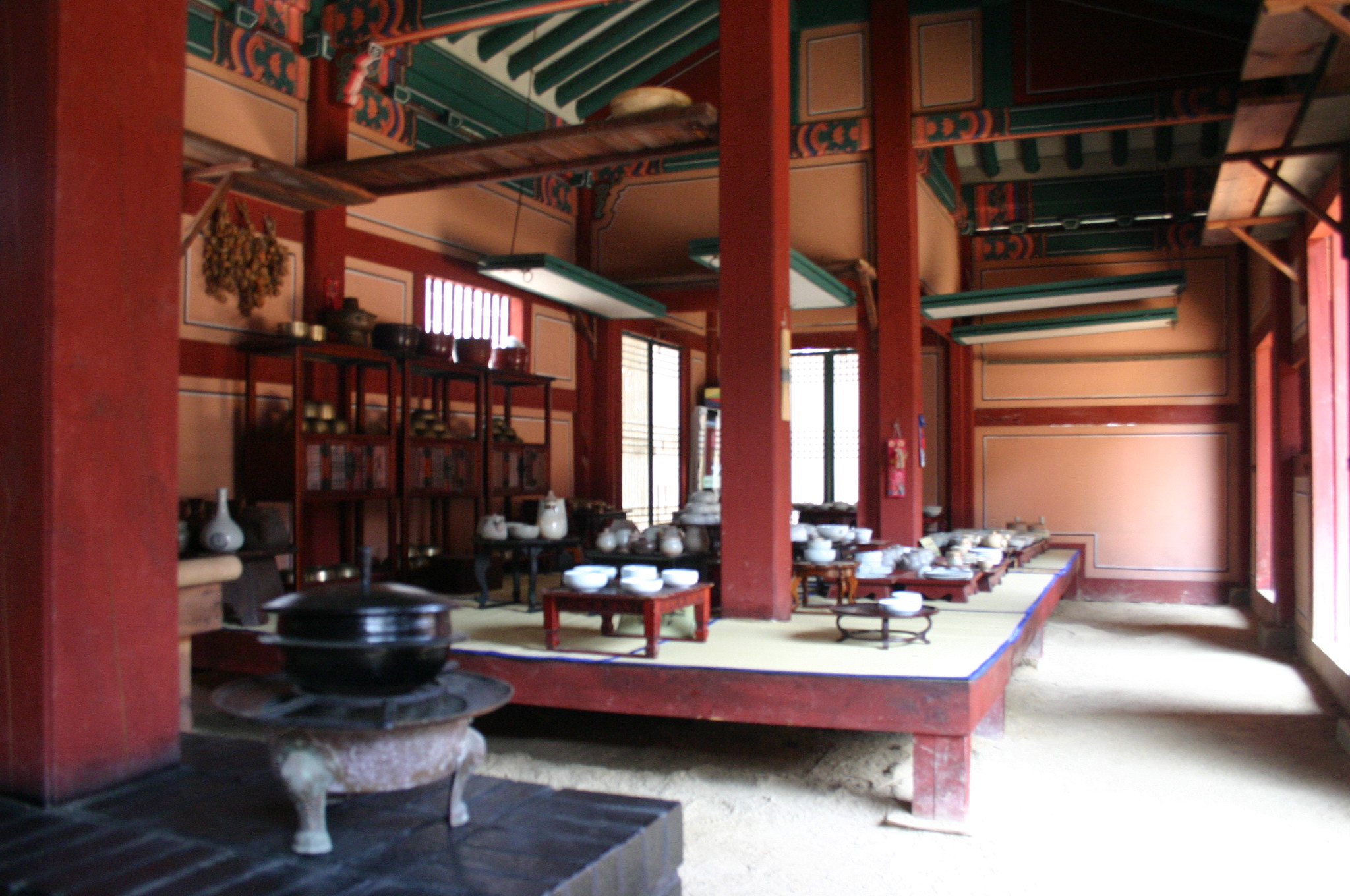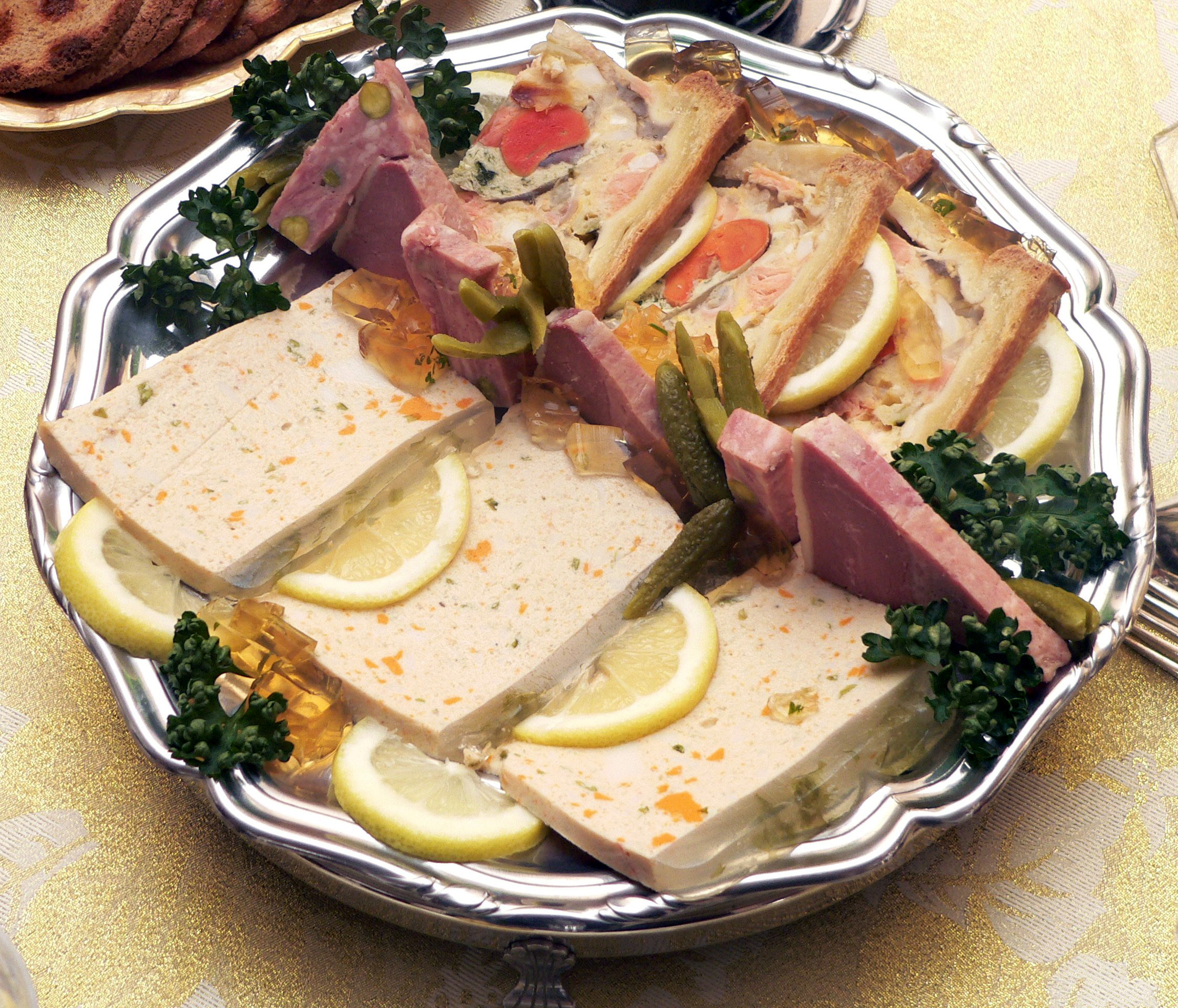|
Jeongol
''Jeongol'' (전골) is a Korean-style hot pot made by putting meat, mushroom, seafood, seasoning, etc., in a stew pot, adding broth, and boiling it. It is similar to the category of Korean stews called ''jjigae'', with the main difference being that ''jjigae'' are generally made with only a single main ingredient, and named after that ingredient (such as '' kimchi jjigae'' or '' sundubu jjigae''), while ''jeongol'' usually contain a variety of main ingredients.Jeongol at Encyclopedia of Korean Culture An additional difference is that ''jeongol'' (like '''') was originally a dish for upper-class Koreans and members of the |
Gopchang Jeongol
''Gopchang-jeongol'' * () or beef tripe hot pot is a spicy Korean stew or casserole made by boiling beef tripe, vegetables, and seasonings in beef broth. ''Gopchang'' refers to beef small intestines, while ''jeongol'' refers to a category of stew or casserole in Korean cuisine. Although the dish is mainly based on beef ''gopchang'', other parts of beef innards are also used to give the dish a richer flavor and chewy texture. To remove any odor and excessive fat in the dish, any white fat adhering to the intestines should be meticulously cleaned out by rubbing them with wheat flour and salt and washing them several times. Since cooking the dish requires not only specialized cooking techniques and a great deal of labor to prepare, but also very fresh ingredients, ''gopchang jeongol'' is generally eaten at restaurants specializing in beef innards dishes. The dish, which is seasoned with a hot and spicy red chili-based sauce, is served as a main entrée, accompanied with a bowl of ... [...More Info...] [...Related Items...] OR: [Wikipedia] [Google] [Baidu] |
Korean Royal Court Cuisine
Korean royal court cuisine (''Joseon Wangjo Gungjung yori'') was the style of cookery within Korean cuisine traditionally consumed at the court of the Joseon Dynasty, which ruled Korea from 1392 to 1910. There has been a revival of this cookery style in the 21st century. It is said that twelve dishes should be served along with rice and soup, with most dishes served in '' bangjja'' ( bronzeware). History Collectively known as ''gungjung eumsik'' during the pre-modern era, the foods of the royal palace reflected the opulent nature of the past rulers of the Korean peninsula. The opulent nature of the royalty is evidenced in examples as far back as the Silla kingdom, where a man-made lake ( Anapji Lake, located in Gyeongju), was created with multiple pavilions and halls for the sole purpose of opulent banquets and a spring fed channel, Poseokjeong, was created for the singular purpose of setting wine cups afloat during the writing of poems. Reflecting the regionalism of the king ... [...More Info...] [...Related Items...] OR: [Wikipedia] [Google] [Baidu] |
Sinseollo
''Sinseollo'' * () or royal hot pot is an elaborate dish consisting of meatballs, small and round '' jeonyueo'' (전유어), mushrooms, and vegetables cooked in a rich broth in Korean royal court cuisine. The dish is a form of '' jeongol'' (elaborate chowder-like stew). It is served in a large bundt pan-shaped vessel with a hole in the center, in which hot embers are placed to keep the dish hot throughout the meal. Etymology and history ''Sinseollo'' is the proper name for the cooking vessel in which this dish is served, which has come to mean the actual dish as well.Sinseollo at Britannica Korea ''Sinseollo'' is a composite word of ''sinseon'' (hangul:신선, hanja:神仙), " Taoist immortal spirit" and ''ro'' (hangul ... [...More Info...] [...Related Items...] OR: [Wikipedia] [Google] [Baidu] |
Tofu
Tofu (), also known as bean curd in English, is a food prepared by coagulating soy milk and then pressing the resulting curds into solid white blocks of varying softness; it can be ''silken'', ''soft'', ''firm'', ''extra firm'' or ''super firm''. Beyond these broad textural categories, there are many varieties of tofu. It has a subtle flavor, so it can be used in savory and sweet dishes. It is often seasoned or marinated to suit the dish and its flavors, and due to its spongy texture, it absorbs flavors well. It is a traditional component of East Asian and Southeast Asian cuisines, and has been consumed in China for over 2,000 years. In modern western cooking, it is most often treated as a meat substitute. Nutritionally, tofu is low in calories, while containing a relatively large amount of protein. It is high in iron, and can have a high calcium or magnesium content depending on the coagulants (e.g. calcium chloride, calcium sulphate, magnesium sulphate) used in man ... [...More Info...] [...Related Items...] OR: [Wikipedia] [Google] [Baidu] |
Korea
Korea ( ko, 한국, or , ) is a peninsular region in East Asia. Since 1945, it has been divided at or near the 38th parallel, with North Korea (Democratic People's Republic of Korea) comprising its northern half and South Korea (Republic of Korea) comprising its southern half. Korea consists of the Korean Peninsula, Jeju Island, and several minor islands near the peninsula. The peninsula is bordered by China to the northwest and Russia to the northeast. It is separated from Japan to the east by the Korea Strait and the Sea of Japan (East Sea). During the first half of the 1st millennium, Korea was divided between three states, Goguryeo, Baekje, and Silla, together known as the Three Kingdoms of Korea. In the second half of the 1st millennium, Silla defeated and conquered Baekje and Goguryeo, leading to the " Unified Silla" period. Meanwhile, Balhae formed in the north, superseding former Goguryeo. Unified Silla eventually collapsed into three separate states due ... [...More Info...] [...Related Items...] OR: [Wikipedia] [Google] [Baidu] |
Seafood
Seafood is any form of sea life regarded as food by humans, prominently including fish and shellfish. Shellfish include various species of molluscs (e.g. bivalve molluscs such as clams, oysters and mussels, and cephalopods such as octopus and squid), crustaceans (e.g. shrimp, crabs, and lobster), and echinoderms (e.g. sea cucumbers and sea urchins). Historically, marine mammals such as cetaceans (whales and dolphins) as well as seals have been eaten as food, though that happens to a lesser extent in modern times. Edible sea plants such as some seaweeds and microalgae are widely eaten as sea vegetables around the world, especially in Asia. Seafood is an important source of (animal) protein in many diets around the world, especially in coastal areas. Semi-vegetarians who consume seafood as the only source of meat are said to adhere to pescetarianism. The harvesting of wild seafood is usually known as fishing or hunting, while the cultivation and farming of seafood is k ... [...More Info...] [...Related Items...] OR: [Wikipedia] [Google] [Baidu] |
Jjigae
''Jjigae'' (Korean: 찌개, ) is a Korean stew. There are many varieties; it is typically made with meat, seafood or vegetables in a broth seasoned with '' gochujang'' (red chilli paste), '' doenjang'' (soy bean paste), '' ganjang'' (soy sauce) or '' saeujeot'' (salted seafood).Jjigae at ''Jjigae'' is usually served in a communal dish, boiling hot. A Korean meal almost always includes either a ''jjigae'' or a '' guk''. During the dynasty, it was known as ''jochi'', and two varieties would always ... [...More Info...] [...Related Items...] OR: [Wikipedia] [Google] [Baidu] |
Offal
Offal (), also called variety meats, pluck or organ meats, is the organs of a butchered animal. The word does not refer to a particular list of edible organs, which varies by culture and region, but usually excludes muscle. Offal may also refer to the by-products of milled grains, such as corn or wheat. Some cultures strongly consider offal as food to be taboo, while others use it as everyday food or even as delicacies. Certain offal dishes—including '' foie gras'', '' pâté'', and haggis —are internationally regarded as gourmet food in the culinary arts. Others remain part of traditional regional cuisine and may be consumed especially during holidays. This includes sweetbread, Jewish chopped liver, U.S. chitterlings, Mexican menudo, as well as many other dishes. On the other hand, intestines are traditionally used as casing for sausages. Depending on the context, ''offal'' may refer only to those parts of an animal carcass discarded after butchering or s ... [...More Info...] [...Related Items...] OR: [Wikipedia] [Google] [Baidu] |
Kyunghyang Sinmun
The ''Kyunghyang Shinmun'' or ''Kyonghyang Sinmun'' is a major daily newspaper published in South Korea. It is based in Seoul. The name literally means ''Urbi et Orbi Daily News''."Who is the ''Kyunghyang Shinmun'' (''Kyunghyang Daily News'')" ''Kyunghyang Shinmun'' website (English). Retrieved 2011-10-06. History ''Kyunghyang Shinmun'' was founded in 1946 by the Catholic Church, which explains its name. Before the Korean War, it was edited by Fr. Peter Ryang, a refugee from the North, and its circulation was 100,000. ''Kyunghyang Shinmun'' was temporarily closed down in May 1959 by the Rhee administration on grounds of having printed "false editorials", ...[...More Info...] [...Related Items...] OR: [Wikipedia] [Google] [Baidu] |
Chosun Ilbo
''The Chosun Ilbo'' (, ) is a daily newspaper in South Korea and the oldest daily newspaper in the country. With a daily circulation of more than 1,800,000, the ''Chosun Ilbo'' has been audited annually since the Audit Bureau of Circulations was established in 1993. ''Chosun Ilbo'' and its subsidiary company, Digital Chosun, operates the ''Chosun.com'' news website, which also publishes web versions of the newspaper in English, Chinese, and Japanese. The paper is considered a newspaper of record for South Korea. History The ''Chosun Ilbo'' Establishment Union was created in September 1919 while the ''Chosun Ilbo'' company was founded on 5 March 1920 by Sin Sogu. The newspaper was critical of, and sometimes directly opposed to, the actions of the Japanese government during Japanese colonial rule (1910–1945). On 27 August 1920, the ''Chosun Ilbo'' was suspended after it published an editorial criticizing what it said was the use of excessive force by the Japanese police a ... [...More Info...] [...Related Items...] OR: [Wikipedia] [Google] [Baidu] |
Octopus
An octopus ( : octopuses or octopodes, see below for variants) is a soft-bodied, eight- limbed mollusc of the order Octopoda (, ). The order consists of some 300 species and is grouped within the class Cephalopoda with squids, cuttlefish, and nautiloids. Like other cephalopods, an octopus is bilaterally symmetric with two eyes and a beaked mouth at the center point of the eight limbs. The soft body can radically alter its shape, enabling octopuses to squeeze through small gaps. They trail their eight appendages behind them as they swim. The siphon is used both for respiration and for locomotion, by expelling a jet of water. Octopuses have a complex nervous system and excellent sight, and are among the most intelligent and behaviourally diverse of all invertebrates. Octopuses inhabit various regions of the ocean, including coral reefs, pelagic waters, and the seabed; some live in the intertidal zone and others at abyssal depths. Most species grow quickly, mature earl ... [...More Info...] [...Related Items...] OR: [Wikipedia] [Google] [Baidu] |
Chili Pepper
Chili peppers (also chile, chile pepper, chilli pepper, or chilli), from Nahuatl '' chīlli'' (), are varieties of the berry-fruit of plants from the genus '' Capsicum'', which are members of the nightshade family Solanaceae, cultivated for their pungency. Chili peppers are widely used in many cuisines as a spice to add "heat" to dishes. Capsaicin and related compounds known as capsaicinoids are the substances giving chili peppers their intensity when ingested or applied topically. While ''chili peppers'' are (to varying degrees) pungent or "spicy", there are other varieties of capsicum such as bell peppers (UK: peppers) which generally provide additional sweetness and flavor to a meal rather than “heat.” Chili peppers are believed to have originated somewhere in Central or South America. and were first cultivated in Mexico. After the Columbian Exchange, many cultivars of chili pepper spread around the world, used for both food and traditional medicine. This led ... [...More Info...] [...Related Items...] OR: [Wikipedia] [Google] [Baidu] |





